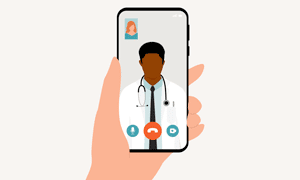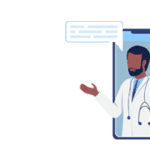The Importance of Telehealth Education
Telehealth has become a steady presence in healthcare and non-healthcare settings, shifting from an emerging tool to an expected part of care delivery. Propelled further by the COVID-19 pandemic, providers and administrators are working to adopt new technologies, provide education to their teams, and improve patient care across rural clinics, community hospitals, academic medical centers, dental clinics, and school-based clinics. Success rests on more than just adding equipment or software; it requires practical steps to turn telehealth’s potential into something usable, financially solvent, and compliant.
Remote monitoring devices for conditions such as diabetes and cardiac conditions, virtual visit platforms, and tools for conducting dental visits are available. Still, they do not automatically fit into existing compliance, operational, or financial systems. Further, equipment or software that may require significant startup costs may remain unused if staff are unsure how to operate, integrate, or obtain reimbursement for their telehealth practice.
Economic Viability
A telehealth venture’s consideration requires assessing its viability and profitability before investing in software and equipment. As part of this, the patient mix should be considered in terms of how many patients are appropriate to be treated through telehealth versus in person before investing resources. Some conditions may not be able to be treated via telehealth. Viability may also include understanding billing and coding requirements, what services may be covered by insurance, and the reimbursement rate ranges for each insurance provider type. The calculation should also include the cost of compliance with state and federal privacy and security requirements, including keeping telehealth medical equipment up to date.
Compliance: Licensure, Consent, Malpractice Insurance, Privacy and Security Requirements, and Education
In addition to economic viability, telehealth ventures must be compliant. State laws in every state wherein a practitioner will work through telemedicine should also be reviewed. Licensing requirements and laws related to new patients being seen in person to establish care should also be researched. State and federal privacy and security requirements must be followed, and software and any electronic data collection devices and tools must meet the criteria.
The consent process must also be clearly outlined before starting and conform to applicable laws and regulations, including how protected health information can be stored and utilized. Malpractice insurance should be reviewed in every state where the practice exists to see if the policy covers telehealth. State laws must be reviewed and followed. Training must be provided as to federal requirements, such as privacy and security requirements. To integrate telehealth in a practical way, each piece needs to be addressed: innovation, training, financial feasibility, state and federal privacy and security rules, case mix, reimbursement, malpractice insurance, consent, and patient care.
Practical Telehealth Models
There are a number of different telehealth models worth exploring.
Rural Health Clinic
As an example of a telehealth model, a rural clinic could create virtual access for specialist care. The clinic could start with a weekly video time wherein a cardiologist from a hospital in a more populated area checks in with patients; vitals are delivered electronically to the specialist and taken by the rural clinic staff. The rural clinic nurse coordinates, taking notes during the call and following up with scripts or referrals. The equipment is minimal in that it is a laptop and schedule.
In an emergency, an academic medical center could link rural emergency rooms to stroke specialists. When a patient arrives, the local team can stabilize the patient while a neurologist joins via video, guiding tests and treatment within minutes. The team could use a shared checklist to obtain vitals and imaging and create a treatment plan.
Further, an IT specialist who travels to a rural clinic setting could create a telehealth system. The IT specialist could pick a basic platform, test it on a spare laptop, and troubleshoot connection issues with a colleague’s help. The specialist could write a quick guide for staff as to how to trouble shoot and run the telehealth processes.
Community Hospital
In another example, a community hospital could add remote check-ins for chronic conditions. A patient with diabetes could obtain a glucose monitor that syncs to a nurse’s system. The nurse would call monthly via video, review trends, and adapt diet advice or medications, catching insulin issues and spikes before these become emergency department visits. This is convenient for patients to follow, as it is built around tools patients already use.
Academic Medical Center
In another example, an administrator at an academic medical center could learn policy piece-by-piece. They start with a privacy checklist—secure links, patient consent—and apply it to a pilot program, such as virtual psych consults. They meet with billing staff to sort reimbursement codes, adjust as rules shift, and keep a shared file of updates for the team. It is less about mastery and more about staying current.
Dental Practice
For a dental practice, there are a few practice models. First, in an asynchronous approach, the provider supervises remotely by reviewing images, and hygienists transmit notes with technology. In a synchronous approach, a real-time remote conference occurs between the patient, provider, hygienist, and any other relevant party, such as a dental specialist. Mobile dentistry means that mobile dental vans or portable equipment is utilized to go to the patients with the dental services. Note that teledentistry is an emerging technology, so many state policies do not refer directly to the practice. There also may be workflow issues in that not every teledentistry platform easily integrates with electronic medical records.
School-based Approach
A school-based approach could have a clinic partner with a district. The clinic could create virtual visits for children with asthma. For the workflow, the parents would call in, a nurse could assess symptoms onscreen, and a plan that might include a change to an inhaler and a doctor visit would follow. Schools are likely to have a tablet already, and this helps student attendance.
Summary
These examples show telehealth providing access to care in small ways in both healthcare and non-healthcare settings. For entities, providers, and administrators, courses developed by the University of Virginia TelehealthVillage and offered through CITI Program, such as the Telehealth for Diabetes series, Telehealth Specialties series, and UVA: Telehealth for Non-Hospital Settings series, offer practical guidance to build specialized programs.









